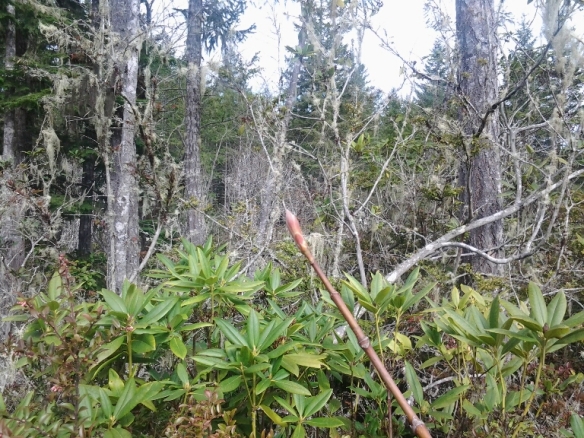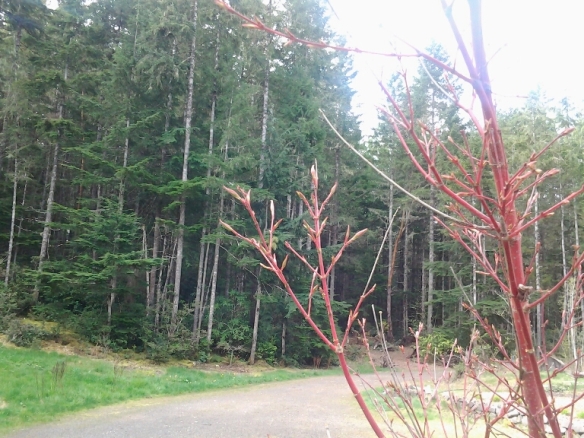First, we should give you a bit of background. You would think that, living in the Pac Northwest, gardening should be as easy as sticking a seed in the ground and jumping back so that the instant sprout doesn’t hit you in the eye as it comes up. Now, that’s true is some areas but not ours. You see, we live along what is euphemistically referred to as the Hood Canal. It sound so much more romantic than “the leftover path of a long since melted glacier” – but that’s exactly what the Hood Canal is. This contrasts sharply to the alluvial plains found in Thurston, King, Snohomish and Pierce counties. There the dirt is rich, black and wonderful. Here – well we say – if you dig a one cubic foot hole you’ll get two bushels of rocks and a cup of sand. On the plus side, this makes for great drainage. Oh wait, plants need water – maybe that’s not as much of a plus as we’re trying to make out.
Anyway, we’ve tried several methods of vegetable gardening. We’ve tried it in the soil after adding tons of organic matter. We’ve tried raised beds. We’ve tried container gardening. Our best success has been with Hugelkultur, a method of gardening developed on the dry plains of eastern Germany and western Poland. We have mutant junkie sized chives and roses with this method so we decided to give it a go for vegetables as well.
Now, digging a pit three to four feet deep and measuring twelve feet across in this soil should have been one of Hercules’ labors. But, since the ancients probably didn’t know that Washington State was there it got left out of the list. (NOTE: I am not masochistic, stupid or Hercules) so, off I went to see our neighbor whose tractor has a backhoe attachment.
After finding out that I dug the first rose bed by hand over a week’s time, he very kindly made it available to dig the other Hugelkultur rose beds. Thus, I had every hope that he would lend it for the current project. And he would have, except the backhoe attachment was broken. He’s the same generous soul who had provided us with a bunch of old, broken concrete to use as a retaining wall for the new garden. (ANOTHER NOTE: The site we chose for the new garden is at the top of a small rise. Our plan was to excavate down into the hill and then build up a retaining wall on the downhill side.)
So, here we sat with a pile of concrete chunks and no hole for it to retain. For one brief, insane moment, I did consider tackling the project by hand – well, by spud bar, pick, and shovel. Fortunately, after a glass of Irish Whiskey (if you like whiskey, you really need to try Trader Joe’s SINGLE MALT Irish. It’s amazing! Sweet, full bodied, and very satisfying – but, as usual, I digress).
As I was saying, after a glass of ambrosia, I came to my senses and Colleen began to research alternatives that were less likely to result in my having a heart attack. (She DOES care! Amazing!). Her sister Judy, who was having imense success with a tiered garden, suggested that we look into African keyhole gardens. (HINT: Guys, women talk to each other about EVERYTHING. It’s part of the way they get things done. So, just expect that all her sisters and most of her friends know a whole lot more than you wish they did!)
Well, we tried them. There are some wonderful sites and several videos to help neophytes like us get started. It took about three days to break the concrete, excavate the water trap, stack the concrete, and fill the garden. It was a lot of initial work but now that it’s going, the garden is virtually effortless to maintain. Suffice it to say, we’ve never had results like this before. We’re sold and we encourage all of you to take the plunge. It’s fun, it’s attractive, and it’s very water efficient.
Be sure to check out the videos and links below the pictures. They’re the ones we found most helpful in our efforts.
http://www.inspirationgreen.com/keyhole-gardens.html
http://www.hgtvgardens.com/raised-garden/keyhole-gardening-tips







































